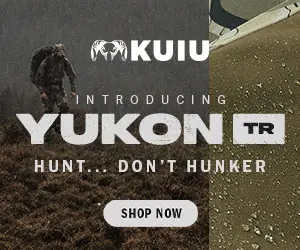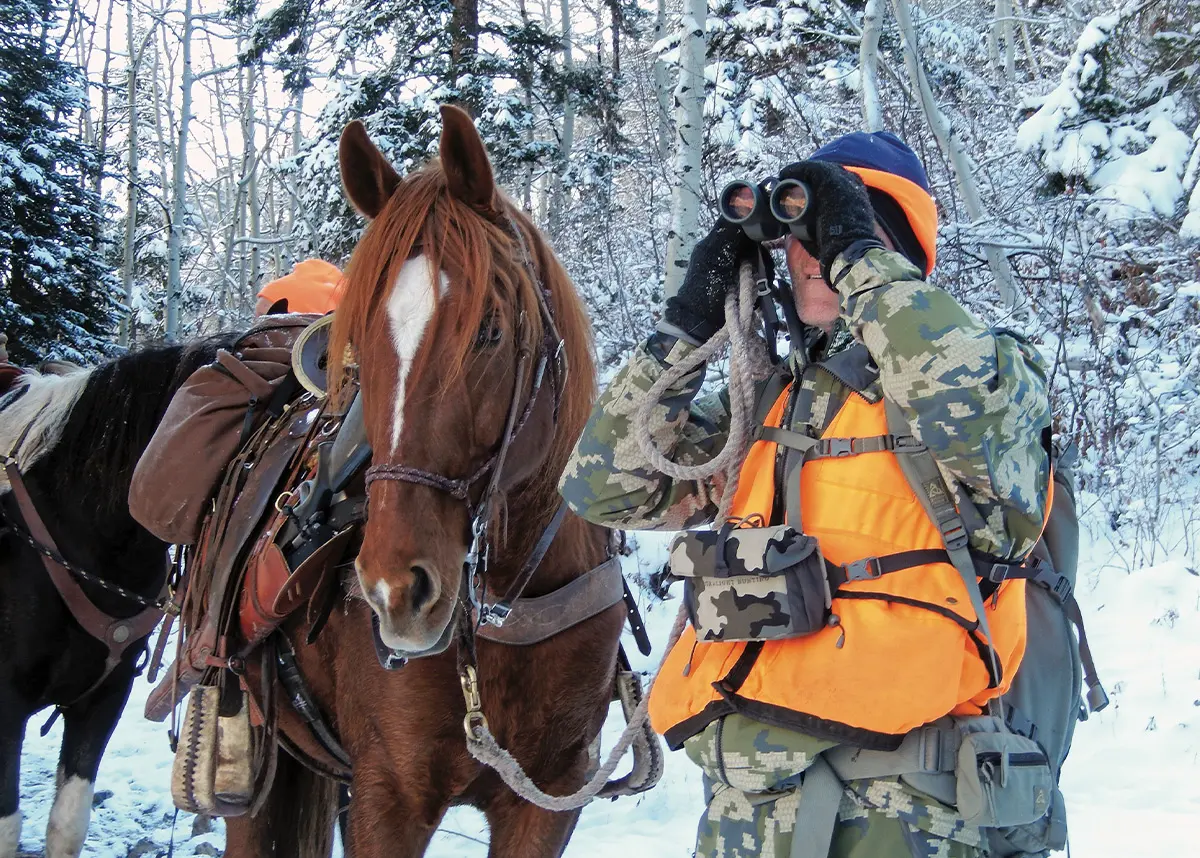
NOTICE: Certain links on this post may earn a commission for Western Hunter Magazine from Amazon or our other affiliate partners when you make a purchase. Thank you for your support.
Outfitting the Hunting Horseman
A popular trend among some hunters today is the “run and gun” technique of carrying all of the gear you need for a day or more of hunting in a backpack, with the intent to camp wherever you may find yourself at the end of the day. This technique gives the hunter a great deal of flexibility and the ability to spot and stalk game all day and be ready to go at the crack of dawn in the morning. The hunting horseman can accomplish much of this technique by hunting on horseback while traversing a lot of country in search of game. Significant day hunts can be accomplished in this manner while hunting from a base camp as well as a remote campsite. The logistics of horse feed and water are essentially the only limiting factors.
Replicating the “run and gun” technique or simply hunting on horseback can be simplified if one has the know-how to carry gear efficiently and effortlessly. It is key that both the hunter and the horse can navigate difficult terrain and be ready to make a stalk on game when the moment arises. How one chooses to organize and carry their gear while hunting on horseback is a largely personal choice, with no single best practice to accomplish this task. However, there are some techniques for determining what your horse carries, how it is carried, and what you carry that can simplify this task.
Forty years ago when I began hunting with horses, we were fairly green in using horses so we usually hunted on foot each day from camp. Our camps were strategically located so as to enable us to hunt from camp each day. The terrain was steep, rugged and we essentially hunted wherever we could find elk, with the distance from camp getting farther each day. We seldom got back to camp before dark, so we always carried a compass, a 7½” topo map, and a flashlight with extra batteries.
We usually wore a hunting knife and sometimes a hatchet on our belts, and in our daypacks, we usually carried a compass, flashlight, topo map, meat sacks, food, water, fire-starting materials, a basic first aid kit, and rain gear. Looking back, what we carried while hunting was actually quite minimal as these were the days before bipods, shooting sticks, trekking poles, rangefinders, wind meters, muzzle brakes, suppressors, cell phones, satellite communications, and all of the other gadgets and gear on the market today for the modern hunter.
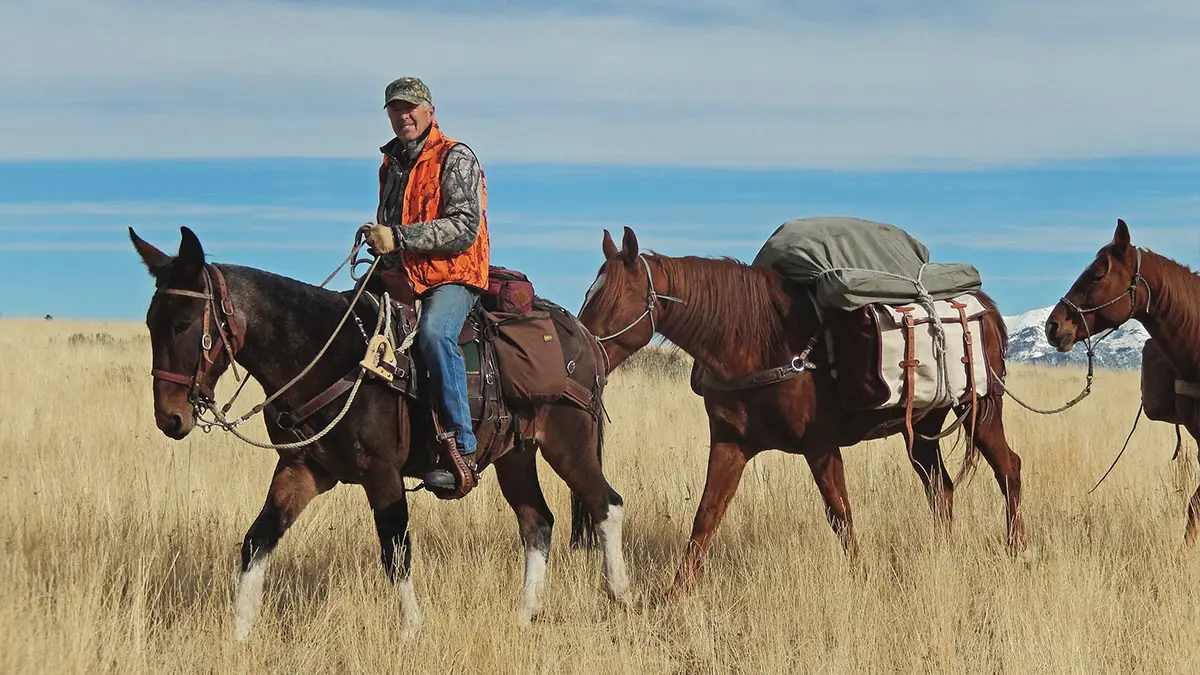
Over the years of hunting with my horses and mules, I have pretty much tried every way of efficiently and conveniently carrying the necessary hunting gear on my riding stock. As my gear list has grown, I am constantly challenged to be able to run light and be ready to easily and quickly get off the horse to clear an obstacle out of the trail, glass an area where game may be found, or if game is spotted quickly secure my horse, pull my rifle out of the scabbard and make a stalk.
In order to accomplish all of these key elements of hunting with a horse, I have developed a basic system of organizing and carrying my gear. The system I have developed over nearly 30 years has been tweaked over time and works especially well today.
Backpacks
When I first began hunting on horseback I didn’t carry much on the horse other than some water and a few other necessary items in our saddlebags. In those days we all had sheath knives on our belts along with an ammo pouch, and if we had binoculars they were on a strap around our necks. We carried whatever other minimum gear that we needed for a day of hunting in small rucksacks or day packs.
Our rifles were always carried on one side of our horses in leather scabbards. Since our hunting packs were usually small, we usually hung them off the saddle horn on the opposite side or tied them behind the cantle with the saddle strings. As I recall, a day pack was always a hassle to have on a horse and I did everything to avoid wearing it. It always affected your balance while mounting or dismounting the horse.
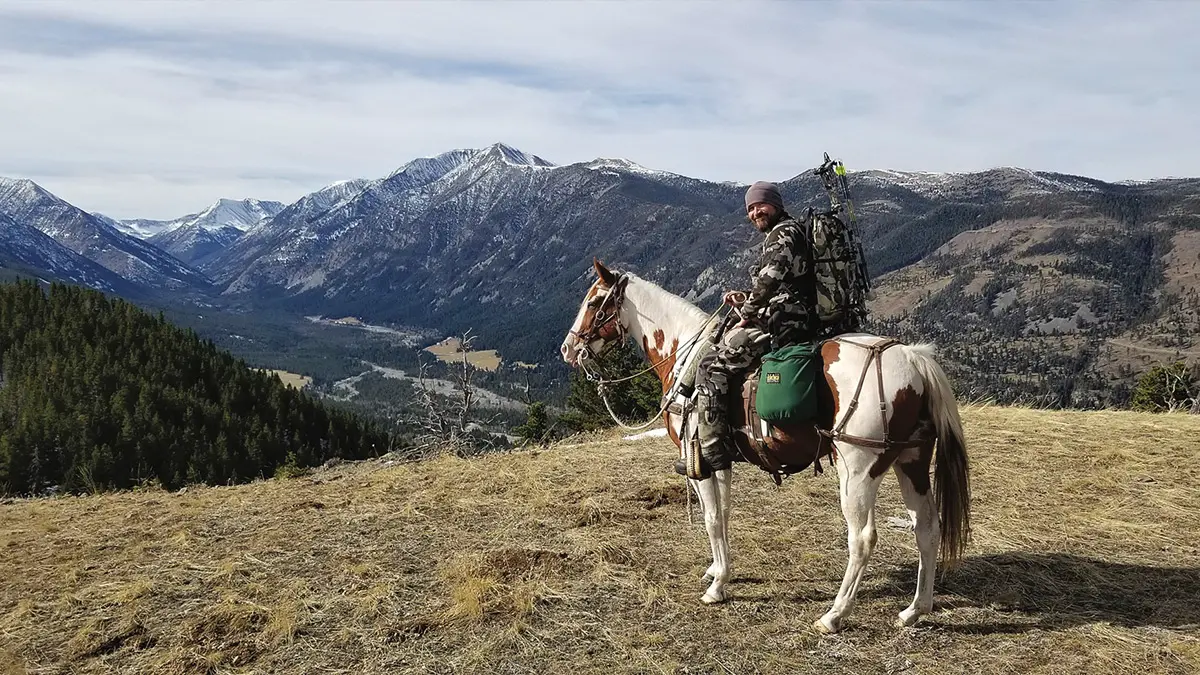
If you have ever been around when a novice hunter wearing a backpack attempts to get on a horse or mule, invariably the hunter pulls the saddle off to the side when attempting to mount. A backpack, with both its bulk and weight, is like a huge ballast hanging on a person’s back. This makes it awkward to initially get on the horse and then to maintain balance while riding, especially in blown-down timber, rough country, or other challenging terrains. If you are getting on and off the horse to glass for game, clear obstacles out of the trail, or whatever, even an experienced rider with a large, loaded backpack will be challenged.
In order to deal with the backpack issue while hunting on horseback, I keep my backpack as small, compact, and light as possible. Since I do not plan on backpacking meat I do not use one designed for such. I wear one while riding my horse, but it contains only the bare necessities for stalking an animal if one is spotted. Everything other than the bare essentials for a stalk is stowed on the horse, in either my saddlebags or cantle pack. Usually, I am riding to a particular area where I intend to leave my riding animal for a period of time, and there will be sufficient time to transfer items needed from the saddlebags and cantle pack to my backpack.
Rifles and Bows
Perhaps the most important required hunting accessory is a means of carrying your rifle or bow efficiently while safely on a riding animal. With the changes in modern rifles and bowhunting equipment, this has become a daunting task, unless you stick to basics. Rifles and associated scopes have changed dramatically in recent years to the point where it seems as if everyone wants a long-range outfit, complete with a suppressor, adjustable stock, scope with 50 mm objective along with windage, elevation, and parallax dials as big as hubcaps, protruding upwards of an inch above the scope.
Although these rifles definitely have their place among a hunter’s gear, they are not designed to be carried on a riding animal unless you want a scabbard as big as a suitcase under your leg or packed somewhere on a pack animal. Outfitter’s supply in Columbia Falls, Montana actually sells a “long-range rifle scabbard” but it is so thick and long that it is cumbersome to carry, especially if you intend to spend a day or two hunting on horseback.
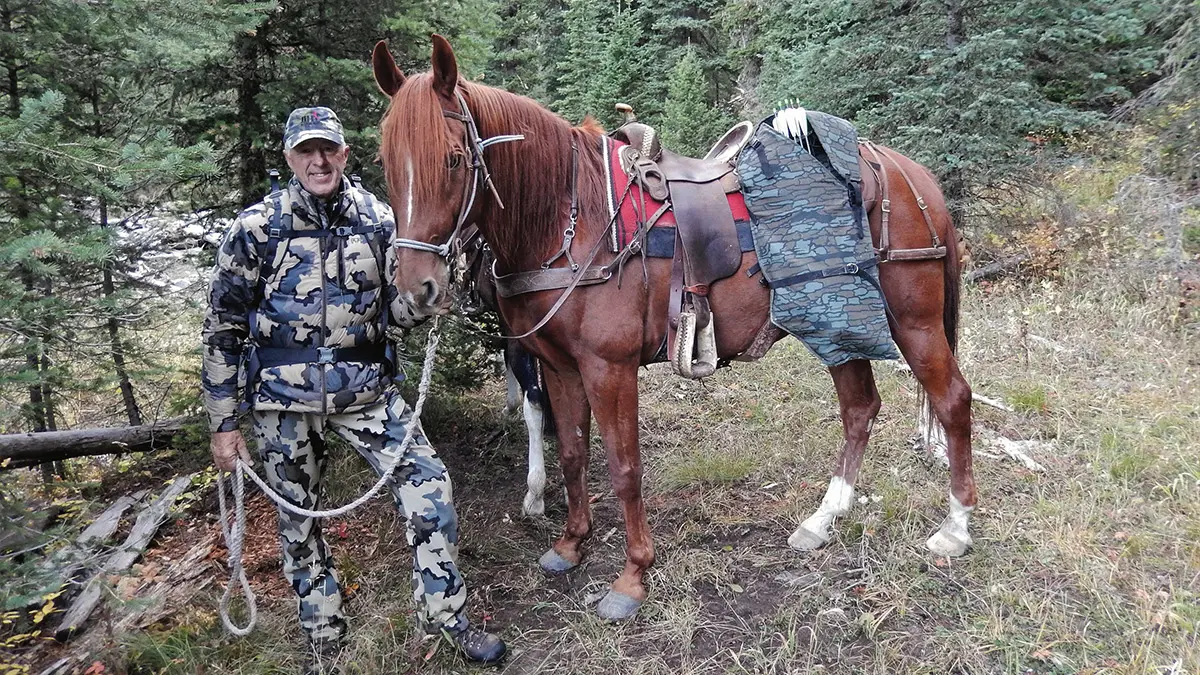
In my view, if a rifle will not fit in a traditional leather scabbard, I will not own it. At my age, I want a lightweight, accurate rifle with a scope of moderate power that will be accurate for shots out to perhaps 500 yards, although over a half-century of hunting I can count on one hand the big game animals that I have shot over 400 yards. This means that a scope with a 40mm objective and low profile windage and elevation dials is ideal.
For most of my life, since I got out of the Army after Vietnam, I have hunted with Weatherby Mark V rifles of various calibers topped with Leupold 3.5-10x scopes. When I began hunting with horses in 1977, I had Ray Holes of Grangeville, Idaho make me a scabbard to fit the Mark V rifles. I still use that scabbard today, although I had to have it lengthened to accommodate my Weatherbys with muzzle brakes.
My choice of rifle, scope, and scabbard combination is a matter of personal preference with some tradition thrown in. Mostly it has to do with convenience and efficiency. The leather scabbard protects the rifle and scope from the elements, is as good as it gets for attaching the scabbard to the riding saddle, and is readily available if game is encountered unexpectedly or at close range. If game is spotted while riding, a hunter can slip off his horse, pull the rifle from the scabbard and be ready to shoot as soon as the horse is secured and it is safe to do so.
As with rifles, archery gear has changed dramatically with ever-increasing gear that is attached to compound bows, making them cumbersome to carry. Compound bows seem to be getting longer and bigger as new technology is incorporated into the latest models. When bowhunting with my horses and mules, I use a bow scabbard for the same reasons that I use a leather rifle scabbard.
I prefer a short compound bow that fits easily in the scabbard and can be carried comfortably on my horse. The bow is readily accessible, rides nicely on the horse and the scabbard protects the bow from damage by limbs, debris, etc. If you are a traditional archer, you can devise a similar scabbard to carry your longbow or recurve, both of which are lighter and not as cumbersome as a compound bow with all of its strings, wheels, sights, and the like.
Saddle Bags and Cantle Packs
High-quality saddlebags that are of sufficient size to carry food, water, and hunting gear (but not too large and heavy on the horse’s kidney area) are essential for the hunting horse. Although there are a variety of saddlebags available which are made of both nylon and leather, I prefer the Trail Max Original saddlebags which are made of 600-denier, machine washable, PVC-backed polyester. These bags are large enough to stow a down jacket or other cold-weather gear in addition to the basic hunting gear that I recommend carrying in the saddlebags while hunting from horseback.
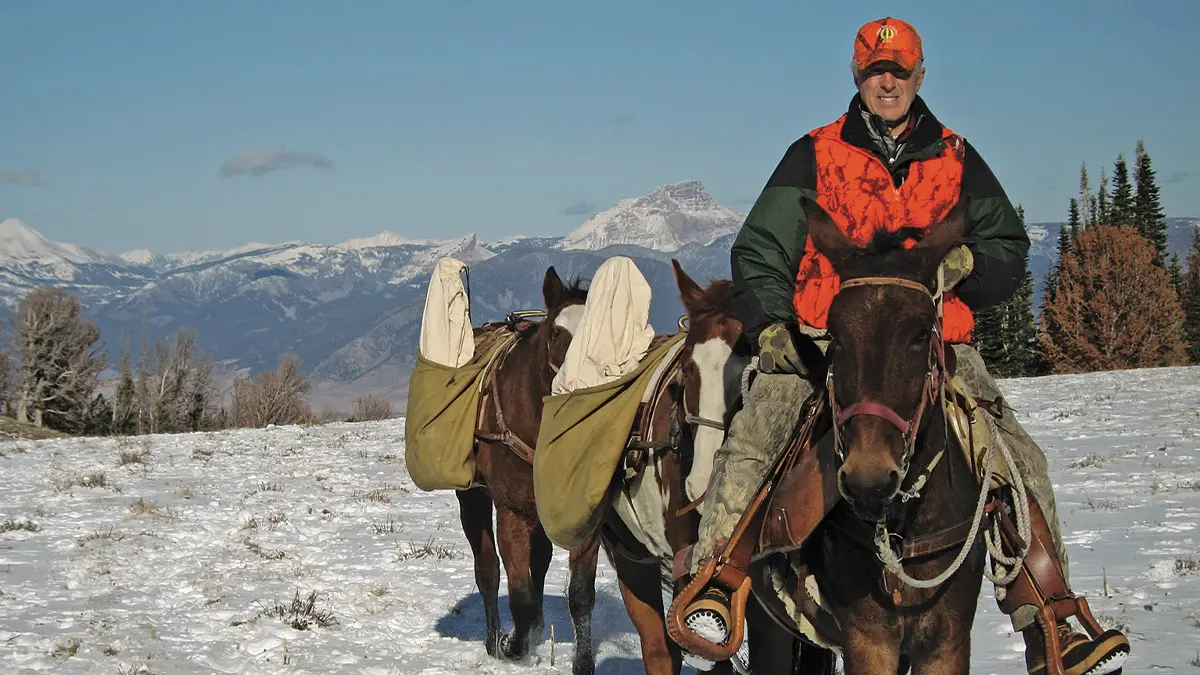
These come with a fairly large cantle bag which is useful if you need to carry overnight essentials. Since these bags are made of nylon, they easily compress when not full, making them more compact. I usually only carry my lightweight rain gear in the cantle pack so it does not ride up on the small daypack that I wear. When carrying a bow scabbard behind my saddle, I do not put anything in the saddlebag on that side of the horse so the scabbard tucks nicely against the horse, behind my leg.
Horn Bag(s) and Pack Saw
The very first time I hunted on horseback was in Colorado, nearly 50 years ago. My hunting partner provided the horses and tack and he always carried a leather “horn bag” which contained a small stove/cup combination for heating water for soup, hot chocolate, coffee, etc. When I returned from that trip, I immediately had two of these leather bags made up; one to carry a Nalgene water bottle and one to carry the same small stove/cup combination. Today, I carry a water bottle on one side of the saddle and a Jetboil on the opposite side.
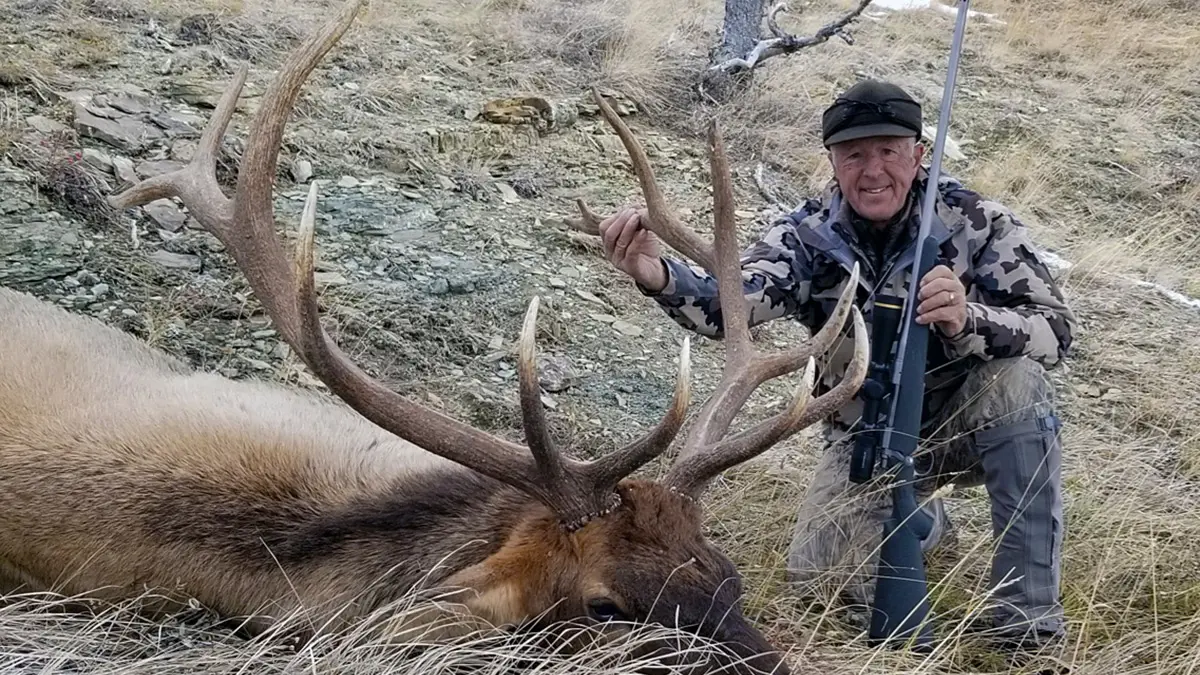
Pouches that hang on either side of the saddle horn are especially convenient and useful for carrying water or mixed energy drinks such as Wilderness Athlete on one side of the saddle and a Jetboil (or equal) compact stove on the opposite side. A cup of hot soup or a freeze-dried meal is great on cold days and in an emergency, the Jetboil will help get you through the night. The pack saw is suitable for cutting debris out of the trail and in an emergency will help with gathering firewood.
On Your Person
When hunting on horseback, I want to have as little as possible on my person other than my hunting clothes, essentials such as glasses (if you need them), binoculars, cell phone, Garmin inReach, and a GPS if you do not have OnX maps downloaded on your phone or an inReach device with a GPS. Emergency communications devices are useless unless you always have access to them. You might also have a few $20 bills in your pocket, just in case. These items can come in handy and can save you, your family, and your hunting partner’s family a lot of grief if you find yourself in an emergency situation or are simply delayed in reaching your destination.
Overnights or Emergencies
The unexpected can always happen so it is always a good idea to be prepared for emergencies and/or staying out on the mountain all night. Your horse will generally be fine if you can find a place to bivouac overnight with water and some grass. You can take the saddle and blankets off the horse and use the blankets to sleep on and gain some insulation from the ground. In very cold weather, I have simply tied my horse up and loosened the cinch so the blankets give the horse some warmth.
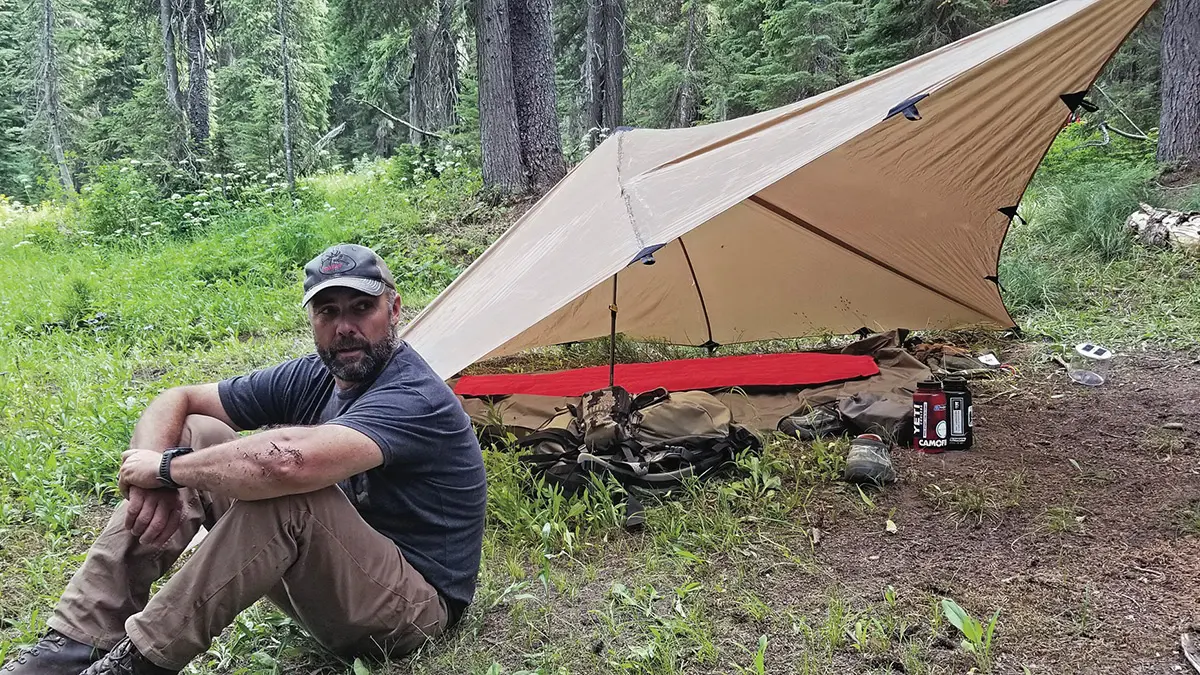
As for yourself, you should have sufficient food, water, and clothing to make it through the night already on your horse. Build a fire and fashion a basic shelter from whatever you have. A tarp shelter such as the one made by Seek Outside will provide shelter from the rain or snow and serve as a backdrop for a fire. A Jetboil (or equivalent) and a means to heat water with a stainless steel cup over an open fire, etc. are invaluable. A freeze-dried meal or two are priceless. Although you can purchase freeze-dried meals which are vacuum sealed, you can reduce the space they occupy by punching a pinhole in the bag, squeezing the air out, and placing a piece of duct tape over the hole.
In today’s world, there is almost no substitute for an inReach global Messaging device. The Mini weighs a mere 4.23 oz, provides global messaging and interactive SOS plus basic GPS and compass page navigation. It can pair with a smartphone and will help you communicate if you need help or advise your hunting party or others of your situation. If you need immediate help, the interactive SOS feature will get you help as soon as possible.

